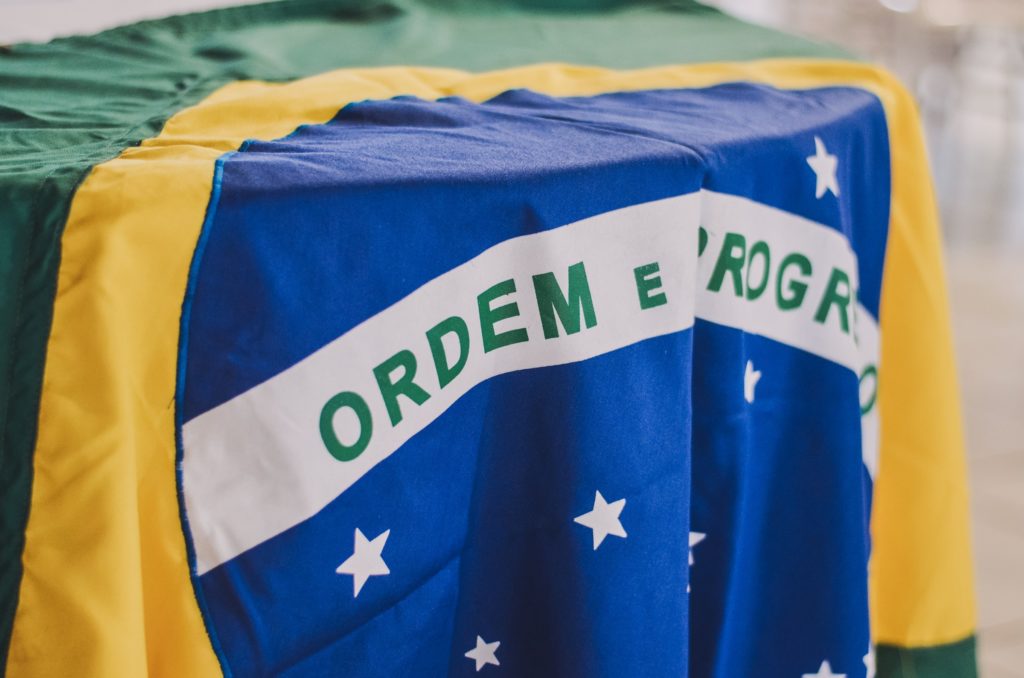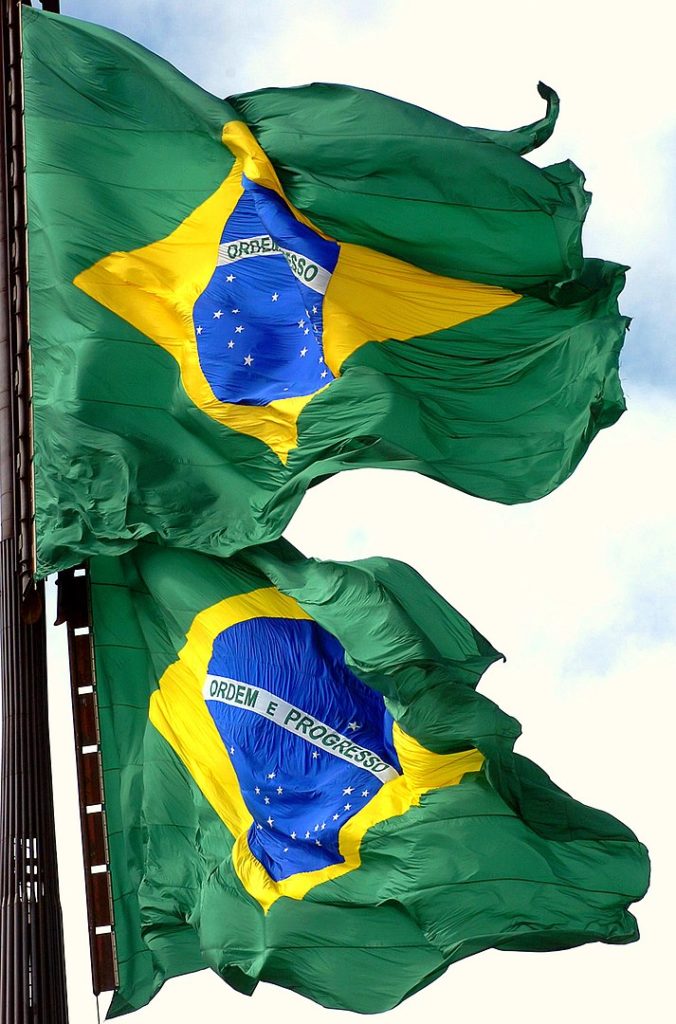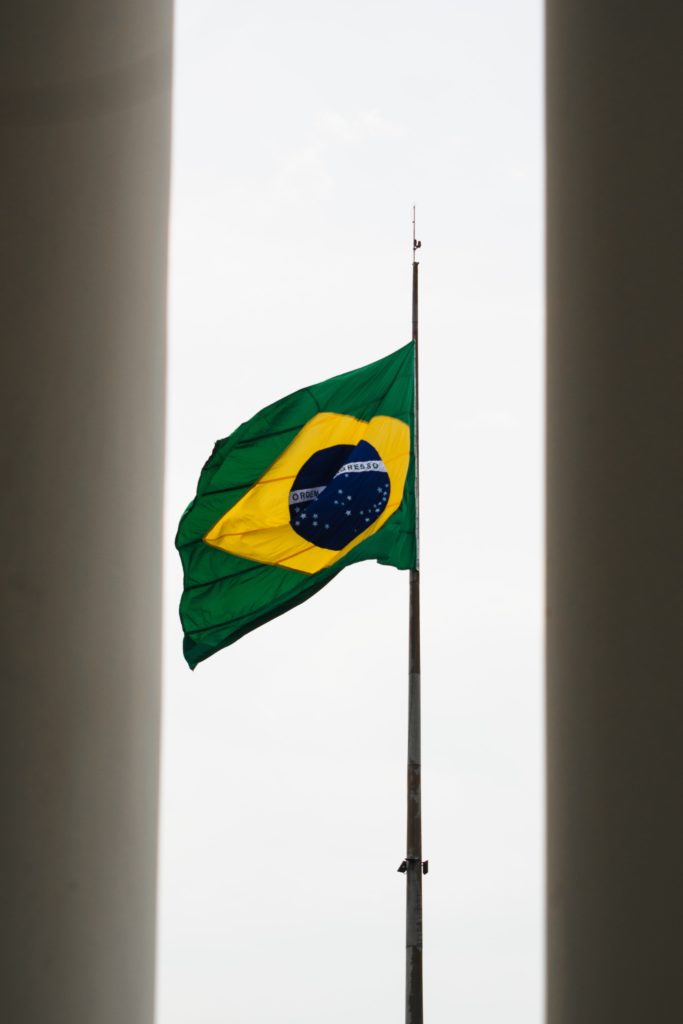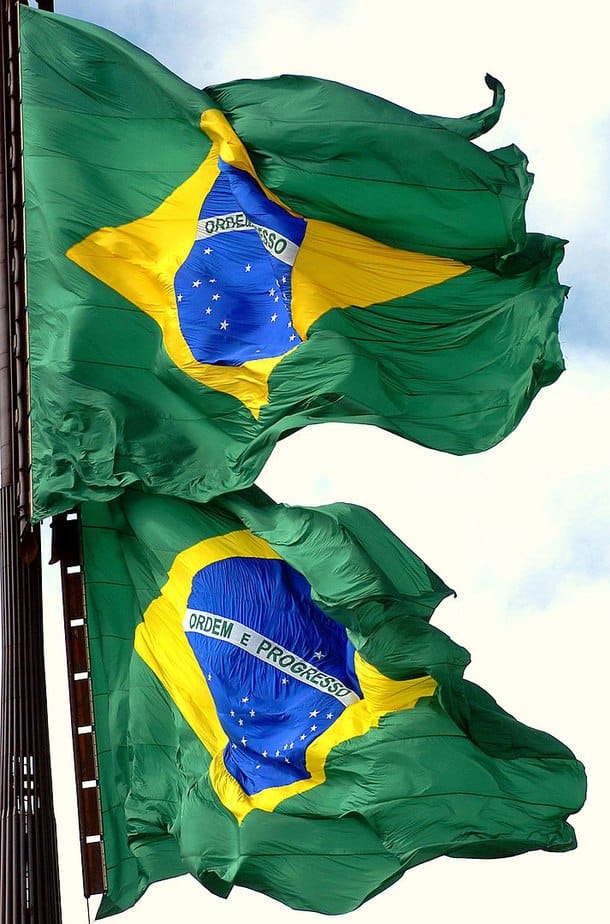
Photo by Rafaela Biazi on Unsplash
Top 8 Facts about the Brazilian Flag
All flags have a history and a story to tell. The Brazilian flag is no different. The patterns, shapes and colours of this flag pay tribute to the country and its people.
This green, yellow, blue and white flag dates back to the early 19th century. After Brazil became independent from the Portuguese, this new flag.
The colours of the flag were inspired by Emperor Pedro I and Empress Maria Leopoldina. This flag remains to be one of the most recognized in the world because of its vibrant colours.
Each of the colours, shapes and symbols on the Brazilian flag has a special meaning. A little adjustment was done on the flag in 1889.
It is interesting to note that the Brazilian flag was designed by a French painter known as Jean-Baptiste Debret.
There is more about this flag. Here are some of the top 8 facts about the Brazilian flag.
1. The colours of the Brazilian flag have a different meaning

Photo by José Cruz – Wikimedia
The first depiction of the colours on the Brazilian flag are; Green for the Amazon forest, Yellow for the abundance of gold in the country, Blue for the sky, White for the Virgin Mary.
This is however not all the colours represent. The colours and design of the flag were borrowed from the old imperial flag from 1889.
The true representation of the colours is Green: The Coat of Arms of the House of Braganza, the family of Emperor Pedro I.
Yellow: The Coat of Arms of Portugal and the House of Habsburg, the family of Empress Maria Leopoldina, wife of Emperor Pedro I.
Blue and stars: The sky of Rio de Janeiro during the proclamation night.
2. Rio de Janeiro is featured in the Brazilian Flag
The stars on the Brazilian flag represent the clear sky over Rio de Janeiro on the morning of November 15, 1889. This was during the proclamation of Brazil as a republic.
It was symbolic because the stars are visible throughout the country all year round.
They also represent the Southern Cross, a depiction of the southern hemisphere. There were 21 stars initially; each for the administrative regions in the country.
3. More stars have been added to the Brazilian Flag

Photo by Rafaela Biazi on Unsplash
After the proclamation of Brazil as a republic, it was agreed that the stars should represent the states. They, therefore, added 21 stars to the flag.
The federal district’s star is located close to the celestial south pole known as Sigma Octantis. This star is visible throughout the year all over the country.
In 1992, a law was passed to update the flag and add a star for every new state created. This also applied when a state was removed or merged with another.
Currently, there are 27 stars on the flag. The last update was in 1992.
4. The Brazilian flag used to look different

Photo by José Cruz – Wikimedia
The current is different from the one used by the Brazilian Empire back in the day. On the older flag, there was an imperial symbol with a blue circle and stars at the centre.
They replaced the circle with a blue globe with stars symbolizing a constellation of stars. Not much was changed from the old design.
Raimundo Teixeira Mendes was the chief designer of the old imperial Brazilian flag. He was assisted by Miguel Lemos, Manuel Pereira Reis, and Decio Villares.
It is said that he also wrote the motto of the flag. He was a big advocate for peace and positivity.
5. There is the meaning behind the Ordem e Progresso slogan on the Brazilian flag

Photo by Rafaela Biazi on Unsplash
The Brazilian flag has a slogan running across the blue circle in a white banner. The Latin term, Ordem e Progresso, means Order and Progress in English.
This was a theme used to mean a successful democracy in Latin America. Brazilian leaders opted for democracy as a way to govern their country.
For true democracy to take root, they agreed that they needed to educate their population to better the economy and trade in the country.
French philosopher Auguste Comte is credited for this motto of positivism.
6. The national hymn is always sung on Flag Day
The Brazilian flag has a national hymn that is sung whenever the flag is hoisted on Flag Day. This happens every year on November 19th.
Olavo Bilac wrote the lyrics while the music was composed by Francisco Manoel da Silva in 1831. This hymn is different from the Brazilian national anthem.
The national anthem on the other hand was composed by Francisco Braga in 1906. The anthem pays tribute to the flag, the nation, the natural resources of Brazil, and its people.
7. The Brazilian flag has handling protocol

Photo by Marília Castelli on Unsplash
Like all national flags in the world, the Brazilian flag has a handling protocol. The flag must be hoisted at the Praça dos Três Poderes permanently.
It also has to be hoisted and lowered daily at the presidential palaces, national congress, supreme federal tribunal and the supreme court among other government office buildings.
When the flag gets worn and rugged, it has to be taken to a military facility to be legally disposed of. The military holds a ceremony on Flag Day when burning the flag.
Folding the flag is also important. When folding them, the military start with the upper part then fold it into the reverse side. The blue globe and motto must face up.
8. Half-mast and black ribbon on the Brazilian flag

Photo by Mateus Campos Felipe on Unsplash
Whenever the state declares official mourning, the flag flies at half-mast. But first, the flag is raised to the top of the pole then lowered.
During a procession, the flag post always has a black ribbon at the top of the flag.
Planning a trip to Paris ? Get ready !
These are Amazon’s best-selling travel products that you may need for coming to Paris.
Bookstore
- The best travel book : Rick Steves – Paris 2023 – Learn more here
- Fodor’s Paris 2024 – Learn more here
Travel Gear
- Venture Pal Lightweight Backpack – Learn more here
- Samsonite Winfield 2 28″ Luggage – Learn more here
- Swig Savvy’s Stainless Steel Insulated Water Bottle – Learn more here
Check Amazon’s best-seller list for the most popular travel accessories. We sometimes read this list just to find out what new travel products people are buying.










